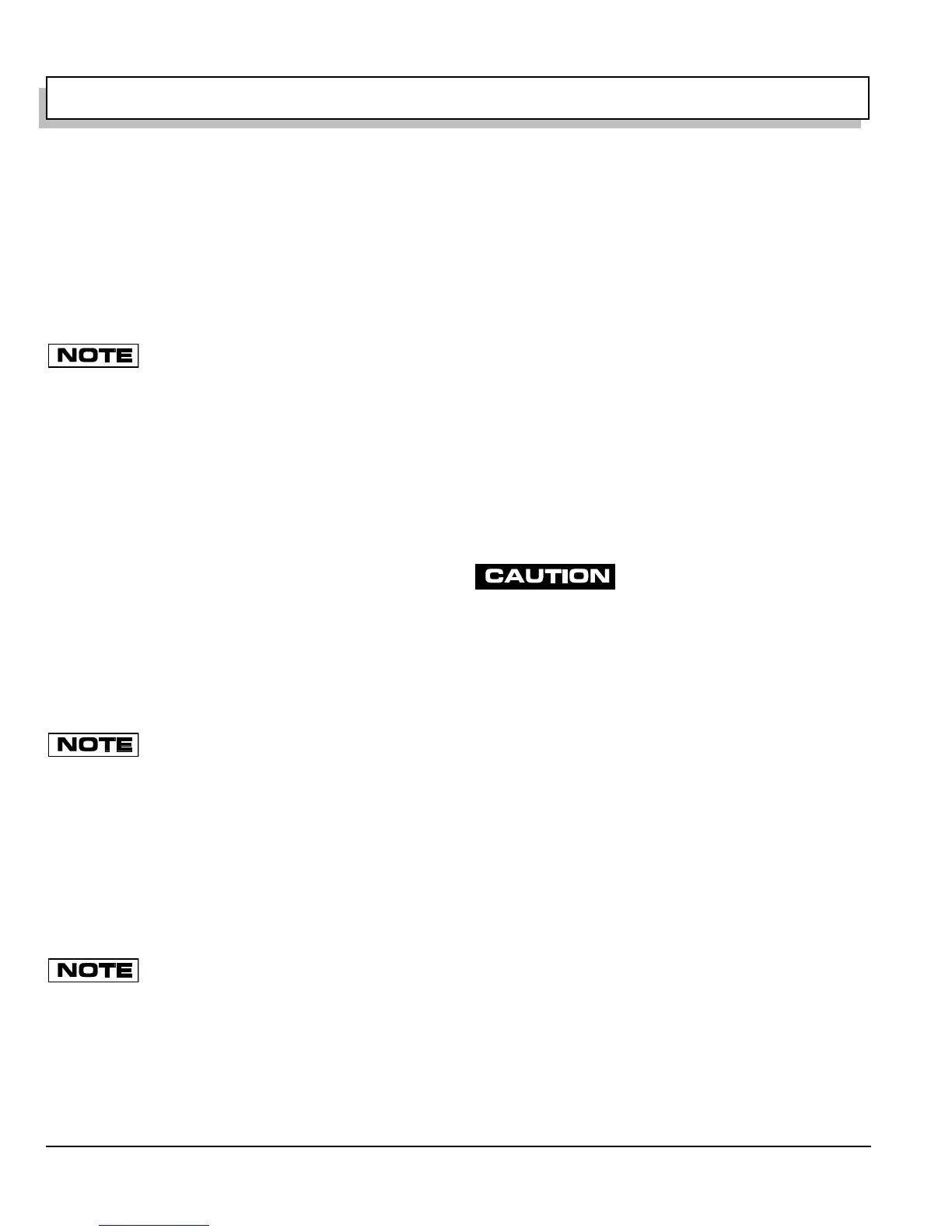ELECTRICAL SYSTEM
Page J-4
Repair and Service Manual
Read all of Section B and this section before attempting any procedure. Pay particular attention to all Notes, Cautions and Warnings
POWER SUPPLY
Tool List Qty. Required
DVOM.......................................................................... 1
1. CHECK FOR LOOSE OR BARE WIRES
Check for loose wires at each terminal connection
and for worn insulation or bare wires touching the
frame. Bare wires may cause a short circuit.
If any DVOM readings indicate a faulty wire, it
is recommended that the condition of the termi-
nals and wire junction be examined. A faulty wire should be
replaced with one of the same gauge and color and wired
between the correct components and wire tied to the harness
bundle. The faulty wire should be cut back close to the harness
and the ends protected with vinyl electrical tape.
2. CHECK BATTERY CONDITION
Check for adequate battery volts (nominal 12 VDC)
by setting DVOM to 30 VDC range and place the red
probe (+) to the middle negative (-) battery post with
the green wire attached. Place the black probe (-) to
the first negative (-) battery post on the driver side
with the black wire attached. A reading of 11 VDC or
greater indicates adequate battery condition. No
reading indicates (a) a poor connection between the
probes and the battery terminals; (b) a faulty DVOM.
A voltage reading below 11 volts indicates poor bat-
tery condition and the vehicle should be recharged
before proceeding with the test.
Due to the resistance of the wires involved
within the harness, voltage readings may be
somewhat lower than battery voltage. A reading of 1 volt below
battery voltage is acceptable.
3. CHECK GREEN POWER WIRE
Firmly attach black probe (-) to the first negative(-)
battery post on the driver side with the black wire
attached and the red probe (+) to the terminal on the
side of the fuse block where the green wire is con-
nected. A reading of battery voltage indicates that the
green wire is in good condition.
The green wire supplies power to the entire
fuse block.
4. CHECK FUSE
Place the red probe (+) to each wire terminal on the
fuse block. A reading of battery voltage indicates that
the fuse is in good condition. No reading indicates a
faulty fuse; replace with a good 15 amp fuse.
ACCESSORY WIRING
After determining that there is power to the fuse panel,
and the fuse is good, continue checking the circuit using
the procedures previously used to check the power sup-
ply, i.e. loose or rusted connections, bare wires, continu-
ity of the wiring from terminal to terminal, operating
condition of switch, etc.
Use the wiring diagram (Ref Fig. 2 on page H-2), and
illustrations (Ref Figs 3, 4 and 5 on pages H-4, 5 and 6)
to check correct wiring and wire routing. If there is power
at the fuse end of the wire, there must also be power at
the other end of the wire at the switch or electrical acces-
sory, and eventually at the ground connection. Electricity
must flow from the fuse panel through the full length of
the circuit to the ground connection. Any interruption of
electricity flow must be corrected, whether by repairing or
replacing the wire, the switch or accessory.
LIGHT BULB REPLACEMENT
To prevent premature bulb failure, do
not touch new bulbs with bare fingers.
Use a clean, dry tissue or paper towel to handle the glass portion
of the bulb
.
Always hold bulbs with a clean, dry tissue or paper towel.
Natural oils from fingers will cause halogen bulbs to fail
prematurely.
Determine which bulb needs to be replaced. Reach
underneath light bar to access bulb from rear. Turn the
bulb socket a quarter turn counterclockwise to unlock
and pull out bulb. Insert new bulb and rotate quarter turn
clockwise to secure.
To replace the taillight bulb, remove hardware securing
lens and remove lens. Install replacement bulb and rein-
stall lens.

